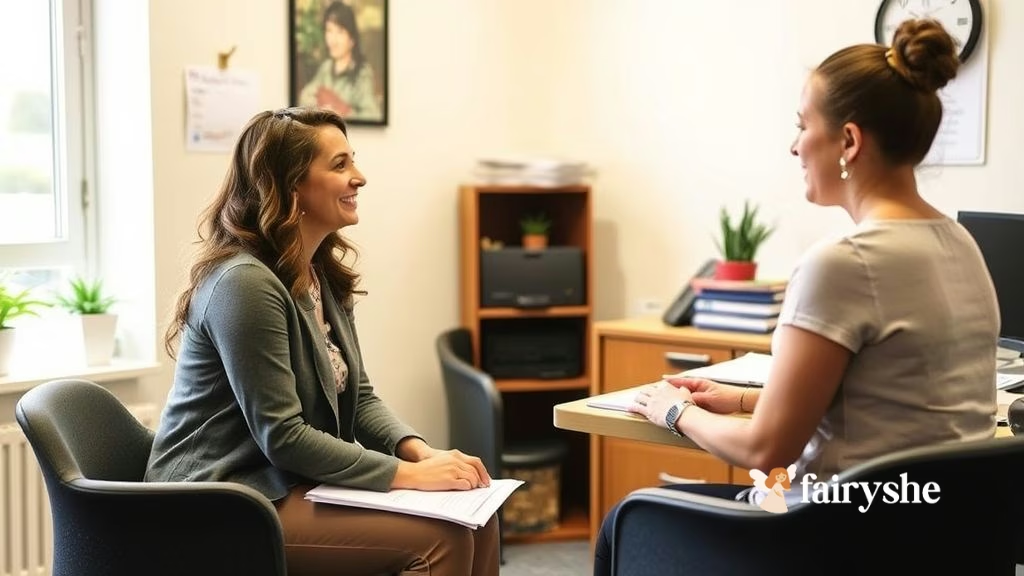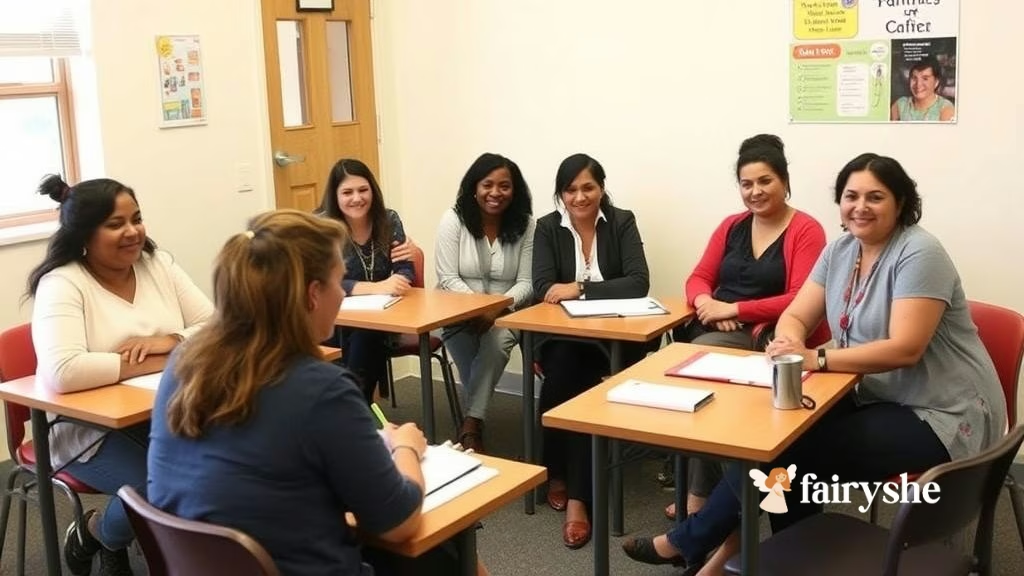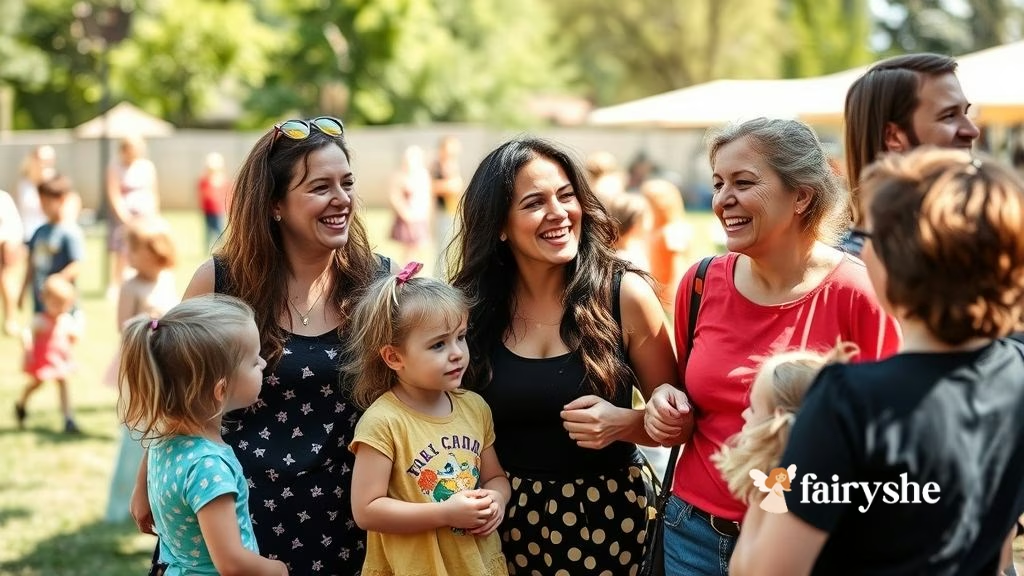
How to Become a Foster Mom
Becoming a foster mom is one of those things that feels huge at first. You probably sit there thinking, can I really do this? Will I be good enough? And the answer is yes… if you take it one step at a time. It’s not magic. It’s just people helping people, kids needing a safe place, and someone willing to open their home. That someone could be you.
Eligibility Requirements

First things first. You need to know if you can even start the process. Most places have some rules. You usually need to be at least 21. You’ll have to do background checks too, like making sure you don’t have anything that could hurt a child. They also want to see that you have some kind of steady income. Don’t panic, it doesn’t have to be a fortune. They just want to know you can pay bills and keep a stable home.
You might also need to show a clean driving record or that your home is safe. It’s like a quick check to make sure kids won’t be in any danger. And yes, your family might be part of this too. Agencies like to know everyone in your house is okay with fostering. It can feel overwhelming, but it’s mostly paperwork and honesty. That’s it.
Related Post: Single Mom Secrets to Building Confidence in Children
Step-by-Step Application Process

After you know you meet the rules, it’s time to actually apply. Think of it like getting ready for a big trip. You need your documents, forms, and a little patience. You’ll fill out applications that ask about your life, your home, and why you want to foster. Then there’s usually an interview. This is not a test. They just want to know the real you.
Next comes the approval stage. Someone from the agency may visit your home. They’ll look at things like your living space, bedrooms, and safety measures. They might ask questions you didn’t even think of. Just answer honestly. It can take a few weeks or a few months. Everyone moves at different speeds, so don’t stress if it feels slow. Waiting is normal.
Choosing the Type of Fostering

Once you’re approved, you get to pick what kind of fostering fits you best. There’s short-term fostering. That’s when a child needs a place to stay for a few weeks or months. Then there’s long-term fostering for kids who need stability for years. And some children have special needs, like medical care or emotional support. Those placements might take extra training.
It’s okay to be honest with yourself here. You don’t have to take every type. Pick what feels right for your home and your life. Some people start small, short-term first, to see how it goes. Others know from the start that they want to commit long-term. There is no wrong choice. It’s about what you can handle and what the child needs.
At the end of the day, becoming a foster mom is not about being perfect. It’s about showing up, learning along the way, and giving a child a chance to feel safe and loved. Even if you feel unsure, taking the first step is already changing a life.
Training and Certification

Once you know you can become a foster mom, the next step is training. Honestly, it sounds scarier than it really is. You might think, how much do I have to learn? Will I mess it up? The good news is, it is all made to help you, not to trick you.
Mandatory Training Programs
Most places ask foster moms to go through some training. Think of it like a class, but not boring. You learn about kids, how their minds work, and how to help them feel safe. Some kids have been through hard times. They might be scared or upset. The training shows you how to respond with care.
You also learn about things like child development. Basically, what is normal at different ages and how kids grow in feelings and thinking. There are exercises, short lessons, and sometimes videos. Nothing is meant to confuse you. It’s about giving you tools, like a backpack full of stuff you might need on the job.

Certification Process and Renewal
After training, you get certified. That just means the agency trusts you to care for a child. They might give you a certificate or a number. It is official, but not scary.
Certification is not forever. Sometimes you need to refresh it. That means taking a short course again, updating your info, or going to a quick meeting. Think of it like checking your car. You make sure everything is working so you can keep driving safely.
Once you are certified, you are ready for a child. You have learned the basics, seen examples, and practiced a little. You still learn more once a child comes, but that is normal. Training gives you confidence and keeps kids safe.
Home Preparation and Assessment

Getting your home ready for a foster child can feel like a lot. You might think, do I have enough space? Is my house safe? Will my kids be okay with it? These thoughts are normal. Everyone worries a little. The key is to take it slow, one thing at a time, and remember you do not have to be perfect.
Home Safety Standards
First, think about safety. Kids need a place where they cannot hurt themselves. Simple things matter. Cover electrical outlets. Lock cleaning supplies. Make sure furniture is steady. If the child is small, remove anything sharp or breakable from reach.
Bedrooms are important too. Each child usually needs their own space, even if it is just a small corner with a bed. Windows should have locks. Smoke detectors and a first aid kit are musts. You do not have to spend a fortune. Just look around and imagine a child moving through your house. What could be dangerous? Fix that.
Home Inspection Process
After your home is ready, someone from the agency will come to see it. Think of it like a friendly check-in. They will walk around, ask questions, and point out small things to improve. They are not there to judge you. They just want to make sure the child is safe and comfortable.
You might feel nervous. That is normal. Take a deep breath. Answer questions honestly. Sometimes they will suggest small changes like extra locks or a new smoke detector. Most of it is easy to fix.
Preparing Family Members

Your home is not just about walls and doors. It is about people too. Other kids, your partner, even grandparents or roommates need to know what fostering means. Talk with them openly. Ask how they feel. Let them ask questions.
Some kids adjust fast, some take time. Your family will help make the child feel safe and welcome. You might be surprised how supportive everyone can be once they understand why it matters.
Preparing your home is not about making it perfect. It is about making it safe, loving, and ready for a child who needs you. Even small changes can make a big difference in helping a child feel at home.
Caring for Foster Children

Bringing a foster child into your home is exciting but also a little scary. You want to do everything right. You want them to feel safe and loved. And sometimes, you might feel like you are walking on eggshells. That is normal. Every child is different. Some open up quickly. Some take weeks or months. And that is okay.
Emotional and Behavioral Needs
Many foster children have been through hard things. Some have moved from home to home. Some have felt scared or alone. Because of this, they may act out or seem upset for no reason. Maybe they cry, yell, or refuse to listen. You might feel frustrated at first. Almost everyone does.
The key is patience. Take a deep breath. Listen more than you talk. Sometimes just being there quietly helps more than words. Simple things work too. A hug, a smile, or saying I understand. Kids notice when you care. And over time, their trust grows.
Try to remember, bad behavior is not about you. It is about their fear or pain. This makes it easier not to take it personally. Small rewards, praise for effort, and gentle routines help a lot. Think of it like planting seeds. They do not grow overnight, but with care, they start to bloom.
Education, Health, and Social Development

School is a big part of a child’s life. Some kids need extra help catching up. Be ready to talk with teachers and help with homework. Simple encouragement matters. It is not about pushing too hard, just being there.
Health is also important. Keep up with doctor visits, medicines, and healthy meals. Some kids may need therapy. That is okay. Therapy is like giving them tools to understand their feelings.
Social skills are also important. Let them play, join clubs, or make friends. Even small interactions, like a playdate or a team game, help a lot. These activities give them confidence and a sense of belonging.
Related Post: 15 Toddler-Friendly Indoor Activities Every Parent Should Try
Establishing Routines and Building Trust
Kids feel safe when they know what comes next. Simple routines help. Breakfast, school, homework, dinner, bedtime. It may feel boring, but predictability matters.
Talk openly, even about small things. Say good morning, ask how they slept, check how they feel. These little moments matter more than you think. Over time, trust grows. They start to believe your home is safe and that you care.
A little story to show how it works. One foster mom I know had a boy who would not eat dinner for weeks. He sat quietly and refused food. She did not yell. She put his favorite plate on the table, sat with him, and talked quietly. After a few weeks, he started eating. Not just food, but also started talking about school and friends. Small steps. But huge for him.
Being a foster mom is not easy. Some days are messy. Some nights are long. But it is also full of moments that make everything worth it. Even a small smile, a hug, or a thank you from a child can remind you why you started.
Support Systems and Resources

Being a foster mom is amazing, but it can be hard too. Some days you feel like you have it all under control. Other days, you wonder if you are doing anything right. That is normal. You do not have to do it alone. There are people and groups ready to help you.
Mentorship and Peer Networks
One of the best things you can do is connect with other foster parents. You can join local groups or online communities. Talking to someone who has been there makes a huge difference. You get advice, hear real stories, and sometimes just vent.
Imagine having a friend who knows exactly what it feels like when a child refuses to sleep or when a tantrum lasts an hour. That friend can help you feel less alone. Even small tips, like a bedtime trick or a way to calm a scared child, can make life easier.
Government and Non-Profit Programs
There are also programs that can help you with money, legal stuff, and emotional support. Some help pay for clothes, school, or medical needs. Others give advice or help with forms.
Do not feel shy about using these programs. They exist for a reason. You are not taking anything away from anyone. You are just making sure a child has what they need. It can lift a lot of stress off your shoulders.
Community Engagement

Being part of the foster community can also mean getting involved. There are events, volunteering, or advocacy opportunities. You can meet other families, learn new tips, and give back a little too.
Even if you just attend a small event, it helps. Kids notice too. They see adults working together, helping others, and feeling proud. It teaches them community matters.
Support systems are like having extra hands when life feels heavy. You get guidance, help, and friendship. You also get reassurance that you are not alone. And trust me, when things get messy, knowing someone has your back makes everything easier.
Think You Could Be a Foster Mom?
It is not easy. Some days are hard. Some nights are long. But a child needs you, and you can make a real difference. You do not have to be perfect. Just caring, patient, and ready to try.
Take a small step today. Call your local foster agency, ask a few questions, and see what it feels like. Even learning one thing is a start. One smile, one hug, one safe home can change a life forever.
FAQs
What is a foster mom?
A foster mom is someone who takes care of a child for a short or long time when the child cannot live with their own family. You give them love, safety, and a home until they can go back or find a permanent family.
Who can become a foster mom?
Anyone who is an adult, has a safe home, and can care for a child can apply. You do not need to be rich or perfect. Agencies check your background, your home, and your family to make sure kids will be safe.
How long does fostering last?
It depends. Some kids stay a few weeks. Some stay years. Sometimes you know the length before the child comes. Other times it is a surprise. Either way, you try to give them love while they are with you.
Will I get support as a foster mom?
Yes. There are agencies, mentors, and other foster parents to help. You can join groups, online or in person. There are programs for money, clothes, therapy, or advice. You do not have to do it alone.
What if my own kids are nervous about a foster child?
Talk to them. Explain why a child is coming. Let them ask questions. Involve them in small ways. Sometimes it takes a while, but kids usually adjust when they feel included and safe.
Can I foster if I work full time?
Yes. Many foster moms work full time. Some kids come for short stays, some longer. You plan your schedule, get support, and sometimes other caregivers help. It is about making it work, not giving up your life.
Do foster children have special needs?
Some do, some don’t. Some need help with school, feelings, or health. Training helps you understand their needs. You learn how to support them and make life easier for everyone.
Is fostering the same as adoption?
No. Fostering is usually temporary. Adoption is permanent. Sometimes foster parents adopt a child later. Sometimes you just help a child for a while. Both are important ways to care for kids.

Pingback: Single Mom Secrets to Building Confidence in Children